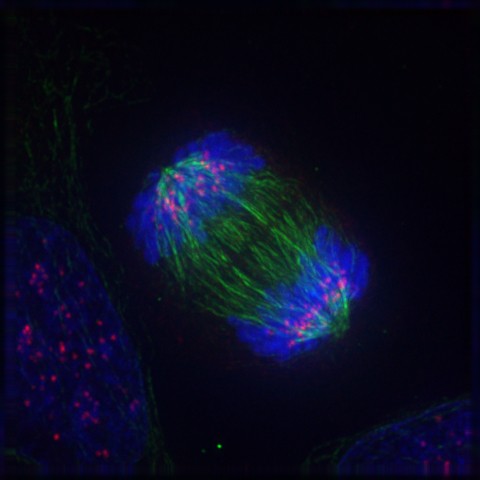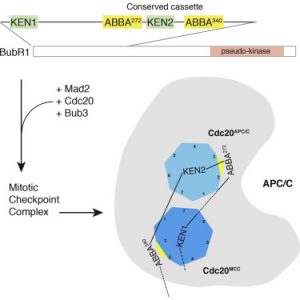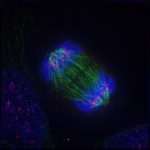
Anaphase mitosis
Table of Contents
How do cells know when to separate during mitosis? A molecule called BubR1 was found to regulate the timing of the division of a parent cell into two progeny cells. Researchers who identified the role of BubR1 were optimistic that their discovery could lead to a potential cancer treatment by inducing cancer cells to undergo premature mitosis.
Phases of mitosis
When a cell enters the Synthesis phase (S phase) of the cell cycle, it is likely that it will subsequently go through the sequential phases of mitosis in which a single cell ultimately gives rise to two cells, each with its own copy of chromosomes. Firstly, the cell enters prophase, which is the phase of mitosis largely characterized by the condensation of chromatin (becoming distinct chromosomes), the beginning of spindle fiber formation, and the disintegration of the nucleolus, nuclear membrane, and organelles. This is then followed by a phase, called metaphase, wherein the chromosomes align along the metaphase plate and the microtubules attach to the kinetochores. Then, the chromosomes are pulled apart toward the opposite poles of the cell during anaphase. In the last phase of mitosis called telophase, the chromosomes have completely moved to the opposite poles of the cell resulting in two sets of nuclei. The cytoplasm divides ultimately giving rise to two new cells.
Delaying strategy of BubR1 during mitosis

Researchers from Institute of Cancer Research reported in their paper published in Molecular Cell the role of BubR1 in mitosis. Accordingly, the spindle assembly checkpoint (SAC) prevents the separation of sister chromatids until all chromosomes are properly attached to the spindle. It also catalyzes the formation of the Mitotic Checkpoint Complex (MCC).1 The BubR1 is part of this molecular complex that regulates the Anaphase Promoting Complex/Cyclosome (APC/C). In particular, the BubR1 is part of the molecular machinery that delays the onset of anaphase during mitosis. The delay is crucial as it ensures the chromosomes to be properly positioned before they will be segregated.2
The researchers further reported that the N-terminal half of BubR1 contains two ABBA motifs. When they mutated these BubR1motifs, the cells become unable to normally delay mitosis. Moreover, the two resulting cells following mitosis had unevenly divided chromosomes. They explained that without the normal ABBA sequences of BubR1, the MCC failed to bind to the APC/C. Consequently, mitosis progressed despite the chromosomes not yet being properly positioned.
Premature mitosis for cancer cells
The researchers made note of the importance of the ABBA sequence of BubR1. It served as a “safety catch” – preventing the machinery from progressing prematurely. Accordingly, cancer cells rely on this safety catch much more than normal cells as they usually have extra chromosomes to be put into place, and thereby need more time for mitosis.2 This could therefore be used to design cancer treatment, such as a drug that could switch off the “safety catch” of BubR1, and forcing cancer cells to divide prematurely with an unevenly divided chromosomes following mitosis.
— written by Maria Victoria Gonzaga
References
1 Fiore, B.D., Wurzenberger, C., Davey, N.E., & Pines, J. (2018).Molecular Cell. https://doi.org/10.1016/j.molcel.2016.11.006
2 Institute of Cancer Research. (2016, December 8). Scientists reveal ‘safety catch’ within all dividing cells: Major discovery could lead to new cancer treatments. ScienceDaily. Retrieved August 7, 2018 from www.sciencedaily.com/releases/2016/12/161208143306.htm

